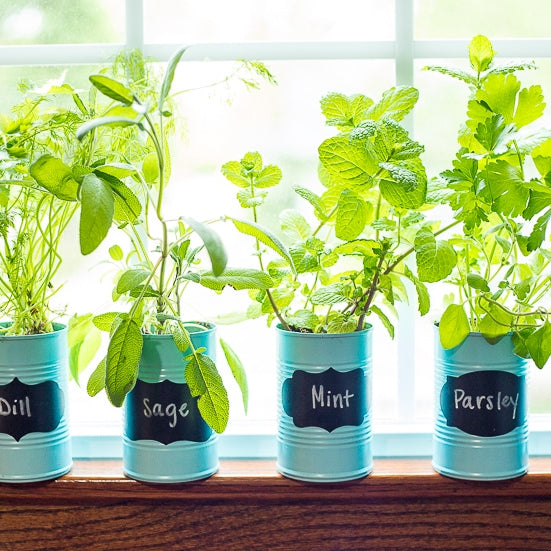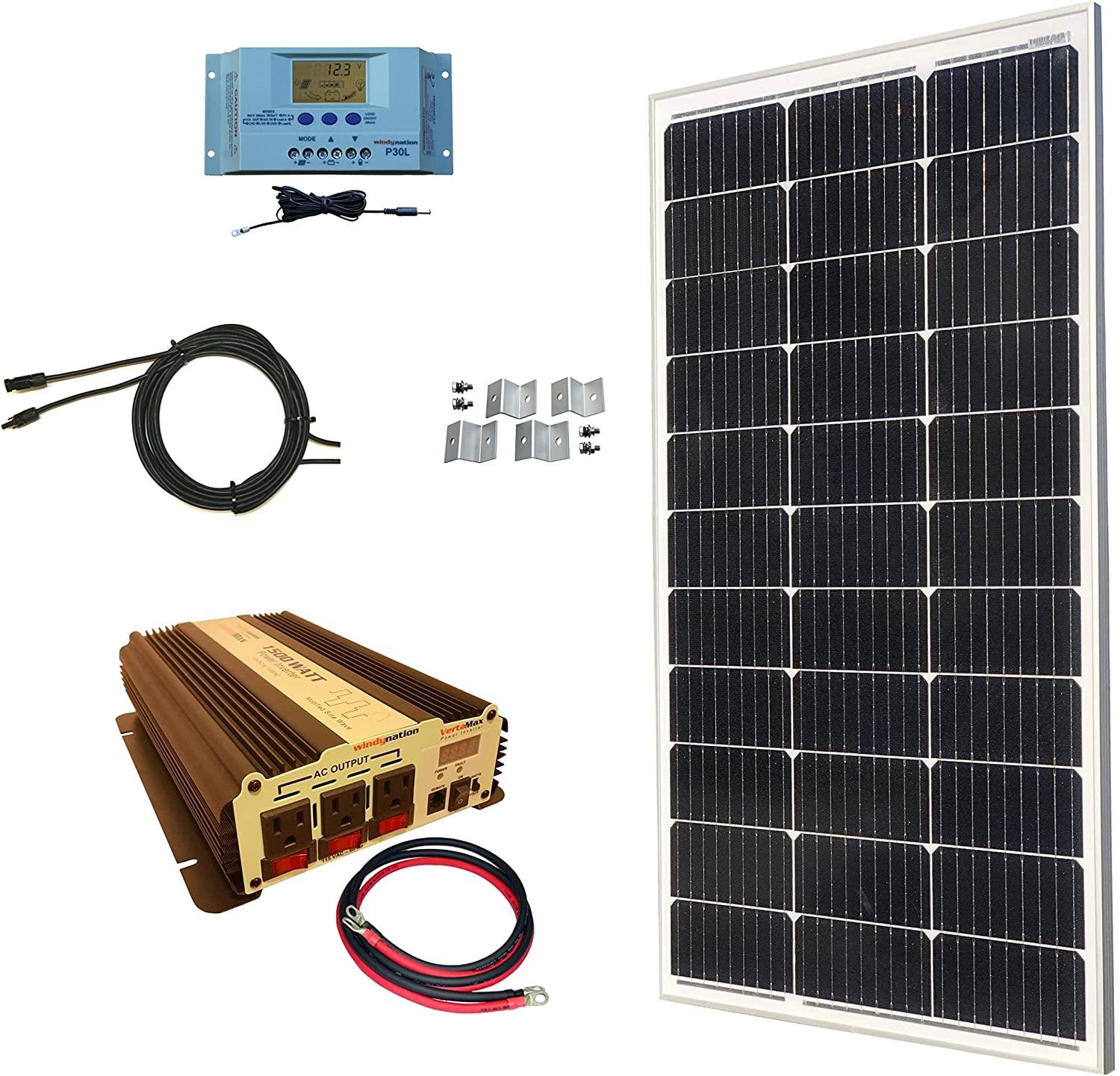

Off Grid Solar Systems: An Introduction for Beginners
Living off the grid is becoming increasingly popular among people who want to be self-sufficient and reduce their environmental footprint. One of the key components of off-grid living is a reliable and sustainable source of energy. In recent years, solar energy has emerged as a top choice for those looking to live off the grid. In this article, we'll discuss everything you need to know about living off the grid using solar energy, including types of solar, how it stores energy, and how much money you can save.

Types of Solar Energy Systems
Before we dive into the installation process, it's important to understand the different types of solar energy systems available. There are two main types of solar energy systems: off-grid and grid-tied.
Off-grid systems are standalone systems that are not connected to the utility grid. They are typically used in remote areas where utility power is not available. Grid-tied systems, on the other hand, are connected to the utility grid and are designed to supplement or replace the power supplied by the utility. Off-grid solar systems are composed of three main components: solar panels, charge controllers, and batteries. Solar panels are used to collect sunlight and convert it into DC electricity. Charge controllers regulate the flow of electricity from the solar panels to the batteries, ensuring that the batteries are not overcharged or undercharged. Batteries store the energy collected by the solar panels and provide power to the off-grid home or cabin.
Grid-tied solar systems are simpler and less expensive than off-grid systems because they do not require batteries. Instead, they use a device called an inverter to convert DC electricity from the solar panels into AC electricity that can be used by the home. Any excess electricity generated by the system is fed back into the utility grid, and the homeowner may receive a credit on their electricity bill.
How Solar Energy Stores Energy
One of the biggest challenges of off-grid living is storing energy for use when the sun isn't shining. This is where batteries come in. Batteries store the energy generated by the solar panels and provide power to the home when the sun isn't shining. The most common type of battery used in off-grid solar systems is a deep-cycle battery, which is designed to be discharged and recharged repeatedly. The amount of energy that a battery can store is measured in kilowatt-hours (kWh). The size of the battery bank needed for an off-grid home depends on the amount of energy the home uses, as well as the number of days of autonomy required. Autonomy refers to the number of days that the battery bank can provide power to the home without being recharged.
What are the different uses of off-grid solar power?
One of the biggest advantages of solar as an energy source is its scalability and modularity, which is the degree to which a system’s components may be separated and recombined for flexibility and variety in use.
It works at all levels, from small devices such as solar phone chargers, all the way up to a system that can power a factory.
Here are some of the most common applications of off-grid solar:
- Providing a charge to a portable phone or tablet charger
- Powering the appliances in an RV
- Generating electricity for small cabins
- Powering small energy-efficient homes
It’s worth noting where off-grid solar systems do NOT make sense: where there is easy access to the utility power. This covers situations where one is looking to power a home in a city, suburb, or town.
If that’s you, you can save much more by opting for a grid-tied or hybrid solar panel system — or even just sticking solely to grid power — depending on the economics of solar in your area.
How Much Money Can You Save with Solar Energy?
The amount of money you can save by living off the grid with solar energy depends on a variety of factors, including the cost of electricity in your area, the size of your solar system, and the amount of energy you use. However, a study conducted by the National Renewable Energy Laboratory found that homeowners who install a solar energy system can save an average of $50 to $100 per month on their electricity bill. The cost of a solar energy system varies depending on the size of the system, the type of solar panels used, and the location of the home. According to a study by the Solar Energy Industries Association, the average cost of a residential solar energy system in the United States in 2021 was $2.81 per watt. This means that a 10-kilowatt solar system would cost approximately $28,100 before any incentives or rebates.
Tools and Supplies Needed for Solar Installation
Installing a solar energy system requires a variety of tools and supplies. Here's a list of the basic tools and supplies you'll need:
1. Solar panels
3. Batteries
4. Inverter (for grid-tied systems)
5. Mounting hardware (such as roof mounts or ground mounts)
6. Wiring and connectors
7. Fuses and breakers
8. Power meter
9. Multimeter
10. Drill and screws
11. Screwdriver
12. Wire strippers
13. Pliers
14. Ladder or scaffolding (if installing on the roof)
It's important to note that while it is possible to install a solar energy system yourself, it can be a complex and dangerous process, especially if you're not familiar with electrical work. It's recommended to hire a licensed and experienced solar installer to ensure that the system is installed safely and correctly. In addition to the tools and supplies needed for installation, there are some important factors to consider when planning a solar installation.
These include:
Location: The amount of sunlight your panels receive will depend on where they are installed. Ideally, panels should be placed in an area with maximum exposure to sunlight throughout the day. Obstructions such as trees, buildings, and shading can significantly reduce the amount of energy your panels generate.
Orientation: The angle at which your panels are installed can also affect their efficiency. In general, panels should be installed facing south in the Northern Hemisphere and north in the Southern Hemisphere to receive maximum exposure to sunlight. The optimal tilt angle will depend on your location and can be calculated based on the latitude of your home.
System size: The size of your solar energy system will depend on your energy needs and the amount of sunlight your panels receive. A smaller system may be sufficient for a single person or a small household, while larger systems are needed to power larger homes or properties with high energy demands.
Battery storage: If you're planning to live off the grid, you'll need to install a battery storage system to store excess energy generated by your solar panels. The size of your battery storage system will depend on your energy needs and the amount of sunlight your panels receive. A larger battery system will allow you to store more energy and rely less on backup generators or other sources of power.
Inverter: Solar panels generate DC (direct current) electricity, while most household appliances and electronics run on AC (alternating current) electricity. An inverter is needed to convert DC electricity into AC electricity so it can be used in your home.
Building permits: Before installing a solar energy system, you may need to obtain building permits and meet certain building codes and regulations. It's important to research local regulations and requirements before beginning installation to ensure that your system is compliant and safe.
By considering these factors and working with a professional solar installer, you can ensure that your solar energy system is efficient, reliable, and safe.
With the advancement of technology, solar panels and lithium batteries have become more efficient and affordable, making it easier than ever to harness the power of the sun. In this blog post, we will discuss some of the top-rated Amazon solar panels that use lithium batteries.
- Renogy 100 Watt 12 Volt Monocrystalline Solar Panel with 20A Voyager Charge Controller: This solar panel kit from Renogy comes with a 100-watt monocrystalline solar panel, a 20A Voyager charge controller, and a set of Z-brackets for easy mounting. The Voyager charge controller is designed to be compatible with lithium batteries, making it a great choice for those looking to use lithium batteries with their solar panel system.
- Jackery SolarSaga 100W Portable Solar Panel: This portable solar panel from Jackery is perfect for those who want to take their solar panel system on the go. It features a 100-watt monocrystalline solar panel and a built-in 60-watt-hour lithium-ion battery pack. The battery pack can be charged using the solar panel or through a USB connection, making it a versatile option for powering small electronics and devices.
- Goal Zero Boulder 100 Briefcase, 100 Watt Monocrystalline Solar Panel: The Goal Zero Boulder 100 Briefcase is a rugged and durable solar panel that is designed to be used in tough outdoor environments. It features a 100-watt monocrystalline solar panel and is compatible with Goal Zero's Yeti lithium battery systems.
- RICH SOLAR 200 Watt 12 Volt Monocrystalline Solar Panel: This solar panel from RICH SOLAR is a great option for those looking for a high-output solar panel. It features a 200-watt monocrystalline solar panel and is designed to be compatible with lithium batteries. It also comes with a 25-year power output warranty, ensuring that you will get many years of use out of your solar panel system.
- WindyNation 100 Watt Solar Panel Kit + 1500W VertaMax Power Inverter + 100ah Lithium Battery: This solar panel kit from WindyNation is a complete system that includes a 100-watt monocrystalline solar panel, a 1500W power inverter, and a 100ah lithium battery. The kit is designed to be easy to install and comes with all of the necessary hardware and wiring.
In conclusion, there are many great solar panels on Amazon that use lithium batteries, making it easier than ever to power your off-grid lifestyle. When shopping for solar panels, be sure to consider factors such as efficiency, durability, and compatibility with your specific solar system. With the right solar panel system, you can enjoy the benefits of solar power and live off the grid with ease.
Recommended Posts
- How to Build a Bug Out Bag for Kids: Tips and Tricks
- 10 Survival Skills Every Kid Should Know
- Food prices are about to skyrocket even more; Prepare for a 'famine,' followed by housing crash, then equities wipeout - Michael Gayed
- South Threatened by Severe Weather After Texas Tornado Disaster: How to Prepare.
- The Ultimate Guide to Radiation Water Filters: How They Work





